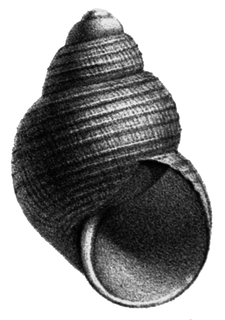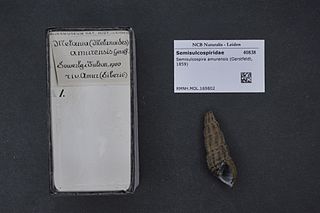
Clonorchis sinensis, the Chinese liver fluke, is a liver fluke belonging to the class Trematoda, phylum Platyhelminthes. It infects fish-eating mammals, including humans. In humans, it infects the common bile duct and gall bladder, feeding on bile. It was discovered by British physician James McConnell at the Medical College Hospital in Calcutta (Kolkata) in 1874. The first description was given by Thomas Spencer Cobbold, who named it Distoma sinense. The fluke passes its lifecycle in three different hosts, namely freshwater snail as first intermediate hosts, freshwater fish as second intermediate host, and mammals as definitive hosts.

Fasciolopsiasis results from an infection by the trematode Fasciolopsis buski, the largest intestinal fluke of humans.

Prostaglandin-I synthase also known as prostaglandin I2 (prostacyclin) synthase (PTGIS) or CYP8A1 is an enzyme involved in prostanoid biosynthesis that in humans is encoded by the PTGIS gene. This enzyme belongs to the family of cytochrome P450 isomerases.

Bithynia is a genus of small freshwater snails with an operculum, aquatic prosobranch gastropod mollusks in the family Bithyniidae.

Parafossarulus manchouricus is a species of freshwater snail with gills and an operculum, an aquatic prosobranch gastropod mollusk in the family Bithyniidae.

Parafossarulus is a genus of freshwater snails with gills and an operculum, an aquatic prosobranch gastropod mollusks in the family Bithyniidae.

Huáng bǎi, huáng bó (黃柏) or huáng bò (黃檗) is one of the fifty fundamental herbs of traditional Chinese medicine. Known also as Cortex Phellodendri, it is the bark of one of two species of Phellodendron tree: Phellodendron amurense or Phellodendron chinense.

Raillietina echinobothrida is a parasitic tapeworm belonging to the class Cestoda. It is the most prevalent and pathogenic helminth parasite in birds, particularly in domestic fowl, Gallus domesticus Linnaeus, 1758. It requires two hosts, birds and ants, for completion of its life cycle. It is a hermaphrodite worm having both the male and female reproductive organs in its body. The parasite is responsible for 'nodular tapeworm disease' in poultry.

Nerita balteata is a species of sea snail, a marine gastropod mollusk in the family Neritidae.

Bufothionine is a sulfur-containing compound which is present in the bufotoxins secreted by the parotoid gland of certain toads of the genera Bufo and Chaunus. This specific compound can be found in the skin of certain species of toad such as the Asiatic Toad, Chaunus arunco, Chaunus crucifer, Chaunus spinulosus, and Chaunus arenarum.
In molecular biology mir-28 microRNA is a short RNA molecule. MicroRNAs function to regulate the expression levels of other genes by several mechanisms.
In molecular biology mir-625 microRNA is a short RNA molecule. MicroRNAs function to regulate the expression levels of other genes by several mechanisms. Many microRNAs play important roles in cancer development and progression.

Raillietina tetragona is a parasitic tapeworm belonging to the class Cestoda. It is a cosmopolitan helminth of the small intestine of pigeon, chicken and guinea fowl, and is found throughout the world.
Paragonimus skrjabini is classified as a species in the genus Paragonimus, which consists of many species of lung flukes that result in the food-borne parasitic disease paragonimiasis.
Parafossarulus spiridonovi is a species of freshwater snail with gills and an operculum, an aquatic prosobranch gastropod mollusk in the family Bithyniidae.
Parafossarulus anomalospiralis is a species of freshwater snail with gills and an operculum, an aquatic prosobranch gastropod mollusk in the family Bithyniidae.

Xiyanping (喜炎平) is an anti-inflammatory and antiviral preparation developed and licensed for use in China. It is a semi-synthetic injectable product derived from the active component of the plant Andrographis paniculata, which is used in Traditional Chinese medicine. Xiyanping is primarily composed of 9-dehydro-17-hydro-andrographolide and sodium 9-dehydro-17-hydro-andrographolide-19-yl sulfate. It is used mainly in the treatment of hand, foot and mouth disease, diarrhea, upper respiratory tract infections and viral pneumonia, though one case report suggested it may also be useful in the treatment of Zika fever.

Koreoleptoxis amurensis is a species of freshwater snail with an operculum, an aquatic gastropod mollusk in the family Semisulcospiridae.

Nanhaipotamon is a genus of freshwater crabs, in the subfamily Potamiscinae, found in southern China and Taiwan. As of 2018, 18 species have been described. The genus is named after the South China Sea, for it occurs mostly in coastal areas.













